by Marco Boffi
Upon returning to Italy after the GoodWork Conference: “Developing Responsible, Caring, & Balanced Youth”, in Dedham, MA, I was thrown again into the messy political debate raging on in my country. After the results of the elections, it took about two months before the so-called political class managed to form a new government. Among the many issues at stake was how to act effectively and consistently with the promises made during the electoral campaign, which is a subject that has received minimal attention so far. And the present government doesn’t seem able to change this bad attitude: the very composition of its members goes completely against the promises made during the electoral campaign, which is not a good premise for future initiatives. A trend to first show concern for the common good, and then to contradict that impression by focusing on one’s self-interest still seems to prevail in this environment. This impression struck me even more forcefully after the conference, probably for good reasons.
In my view, the connection between the strictly political world and Good Work reflections is closer than it seems. In 2011, two incidents in Europe – with vastly different outcomes – illustrate this point. The first one took place in Germany, when then Minister of Defense Karl-Theodor zu Guttenberg, a popular politician in the country, was found guilty of plagiarism in the writing of his doctoral thesis. The case quickly garnered public attention, and Guttenberg resigned from all political offices. The second event occurred at approximately the same time in Italy. Antonio Razzi, a member of the Italian Parliament, was secretly recorded while advising a colleague to follow his practice of making political decisions for his economic benefit (which, if proven, constitutes a crime of corruption). The wide media interest didn’t greatly impact his political career, as he didn’t even resign. On the contrary, he was able to maintain his seat as a Member of the Senate in the last election.
In these examples, there is certainly a difference in the emphasis given to concepts such as “responsibility” or “ethics” by these politicians, possibly resulting from different individual experiences. But it is equally interesting to analyze the public perception of these examples, because the reaction – or non-reaction – of citizens to such conduct is crucial in shaping a politicians’ behavior. Taking a stance against a wrong behavior, to defend in general the common interest or even only to improve the party you vote for, is an individual action with the potential to produce healthy results throughout the community. It can drive political parties to punish this conduct independently of its legal consequences, journalists to cover the story, voters to change their intentions. However, to obtain this positive contagion it is necessary to develop a critical mass which makes the change stable. If the assumption of responsibility doesn’t jump from the individual to a collective level – irrespective of how structured the group is in the beginning – the system will be able to erase the scandal without changing its own functioning. Which is exactly what has been happening in Italy during the last decades: the main concern is to hide the misbehavior instead of discrediting it, protecting life long lasting political careers. The lack of a sustained social reaction to every transgression is what in the end makes this type of behavior acceptable and even attractive to politicians.
With these thoughts in mind, I joined the conference with a spirit of exploring good connections between politics and participation. I found it in the very first plenary, when Danielle Allen pointed out the necessity of shifting our shared imagination about activism from single heroes to collective initiatives. This step is fundamental in educating youth to accept the limits of individual action, which is the premise of engaging in civic activities with others.
While a variety of participatory elements are integrated into institutional decision-making in many modern democracies, the representative model now has an even greater presence. This difference means that officials still have crucial power. As such, highlighting collective action would also play a key role in shaping the perception of what function politicians can have in our society. Such variation would occur in both a direct and indirect way.
On one hand, we would educate future politicians to perceive their role as strictly connected to civic purpose(s). Being elected and obtaining power should not be seen as a goal in itself, but as a way to fulfill collective goals. Focusing on the collective aspect of politics would also discourage the most narcissistic forms of engagement. There would always be space for charismatic figures who are able to inspire, attract, and move the citizens. But beyond this factor, we would also finally see leadership skills directed towards the service of the common good and not for the leader himself.
On the other hand, such an approach would catalyze a different view among citizens. If institutionalized forms of politics are seen as an extension of civic participation we can’t complain anymore about bad politics because we are bad politics. This realization would change our expectations about politicians, diminishing the attitude of “waiting for a savior” to fix all of our problems. It’s not necessary to be a full-time activist to play the role of watchdog. A modification of these values would significantly affect our voting behavior and accordingly the selective mechanism of politicians.
These reflections, which sound driven by common sense, are more difficult to apply than they seem. This situation has especially been true in Italy, where bad examples like the one above are becoming more and more frequent. There is a desperate need for good models to foster participation, not only as a concerned or angry reaction to injustice but also as a tempered way of conceiving our role as citizens. Envisioning personal commitment as a normal civic behavior is the key to oppose withdrawal from participative opportunities. This is where I see the strong influence that the Good Project can exert on political activities: raising the awareness of the consequences of individual actions in everyday life is an effective way of providing the citizens with the tools to take care of their own communities.
I was pleased to find out how the variety of initiatives revolving around the Good Project is consistent with such themes. I appreciated the coherence between the principles and actions that emphasized giving voice directly to the youth during the conference. It illustrated how the “good seeds” planted many years ago grew and became a blooming plant. But as gardeners of democracy, we do not only want plants to flourish but also to be fecund and give us many fruits. Gardening metaphors aside, it means that you evaluate the success of an event like this conference not only referring to the work done by the organizers but also to the participants who took part in it. Through this lens I again sensed the consistency of the project in terms of meeting responsible, caring and balanced people. I met teachers open to self-criticism, who were debating on the fact that they’re not stuck in bad schools, they are bad schools. It was a bold way of taking on the responsibility of their work. I participated in a workshop on ethics and digital life where we discussed in an informed and non-judgmental way the consequences of social media on our lives. It was so non-judgmental that we immediately shared our ideas through our avatars! I can’t wait to see such a state of awareness at a political convention debate. Meeting these individuals also reminded me of the important role of institutions in this process, that is to offer citizens adequate spaces and competent figures to manage the participatory activities. Being directly engaged is demanding and can also be frustrating, hence you cannot simply leave it to improvisation but must prepare the ground for it.
In response to Howard Gardner’s question about how we will apply the reflections developed during these days, I hope to answer in the near future with some tangible initiatives. In the end it is just a matter of consistency between ideas and actions.





